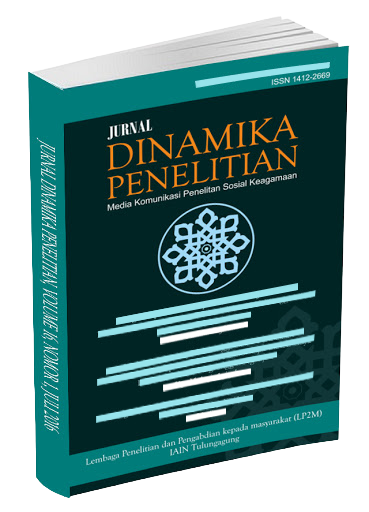Abstract
This research aims to develop a STEM-based mathematics learning design for elementary school students. Therefore, this research is included in research and development. The learning design development process follows the Plomp model, which consists of five stages: 1) the initial investigation phase; 2) the design phase; 3) the construction phase (realization); 4) the test, evaluation and revision phase; and 5) implementation phase. The data was collected through interviews, observation, and essay tests. Interviews are used to identify student and teacher responses to learning design. Observations are carried out during the implementation of learning to monitor the process directly. The essay test is used to measure students' mathematical literacy abilities. Data from interviews and observations were analyzed using qualitative descriptive analysis, while quantitative descriptive analysis was used to describe the average student success and the effectiveness of the learning design. The STEM-based mathematics learning design developed is based on the Project Based Learning learning model, adapted to STEM theories and the needs of elementary school students. This design includes six phases: orientation, strategy construction, application, communication, reflection, and assessment. The results of limited trials show that STEM-based mathematics learning designs are effectively implemented in the classroom and can improve students' abilities in solving mathematical literacy problems according to the PISA dimensions.
References
Asmuniv. 2015. Pendekatan Terpadu Pendidikan STEM Upaya Mempersiapkan Sumber Daya Manusia Indonesia Yang Memiliki Pengetahuan Interdisipliner Dalam Menyosong Kebutuhan Bidang Karir Pekerjaan Masyarakat Ekonomi ASEAN (MEA). Diakses dari http://www.vedcmalang.com/pppptkboemlg/index.php/menuutama/listrikelectro/1507-asv9 diakses tanggal 20 Nopember 2018.
Bozkurt Altan, E., &Ercan, S. (2016). STEM Education Program for Science Teachers: Perceptions and Competencies. Journal of Turkish Science Education (TUSED), 13.
Cooney, S., & Bottoms, G. (2003). Middle Grades to High School: Mending a Weak Link. Research Brief.
Diputra, S. K. & Sukmana, Y. I. A. (2018). Pengembangan Instrumen Berbasis Tematik Sesuai Standar PISA Untuk Mengukur Literasi Matematika Siswa Sekolah Dasar pada Kurikulum 2013 di Kabupaten Buleleng. Laporan penelitian: tidak diterbitkan.
Dugger, W. E. (2010, December). Evolution of STEM in the United States. In 6th Biennial International Conference on Technology Education Research in Australia retrieved from http://www. iteea. org/Resources/PressRoom/AustraliaPaper. pdf.diakses tanggal 20 Nopember 2018.
Gatabi, A. R., Stacey, K., & Gooya, Z. (2012). Investigating grade nine textbook problems for characteristics related to mathematical literacy. Mathematics Education Research Journal, 24(4).
Hassan, M. N., Abdullah, A. H., Ismail, N., Suhud, S. N. A., & Hamzah, M. H. (2018). Mathematics Curriculum Framework for Early Childhood Education Based on Science, Technology, Engineering and Mathematics (STEM). International Electronic Journal of Mathematics Education, 14(1), 15-31.
Ismayani, A. (2016). Pengaruh penerapan STEM project-based learning terhadap kreativitas matematis siswa SMK. Indonesian Digital Journal of Mathematics and Education, 3(4), 264-272.
Kelley, T. R., & Knowles, J. G. (2016). A conceptual framework for integrated STEM education. International Journal of STEM Education, 3(1), 11.
Kohar, A.W. (2013). Developing PISA-like mathematics tasks to promote students’ mathematicalliteracy. Proceeding in the Second South East Asia Design/Development Reseach (SEA-DR) Conference 2014, 14-26. Palembang: Sriwijaya University.
Laboy-Rush, D. (2010). Integrated STEMeducation through project-based learning.www.learning.com/stem/whitepaper/integrated-STEM-through-Project-basedLearning diakses tanggal 20 Nopember 2018.
Mulbar, U. (2015). Pengembangan desain pembelajaran Matematika dengan memanfaatkan sistem sosial masyarakat. Cakrawala Pendidikan, 2(2).
National Research Council. (2011). Successful K-12 STEM education: Identifying effective approaches in science, technology, engineering, and mathematics. National Academies Press.
Novita, R., & Putra, M. (2016). Using Task Like PISA’s Problem to Support Student’s Creativity in Mathematics. Journal on Mathematics Education, 7(1).
OECD. (2016). Country Note-Results from PISA 2015. Tersedia di http://www.oecd.org/pisa/PISA-2015-Indonesia.pdf, diakses tanggal 3 April 2017.
OECD. (2016). PISA 2015 Assessment and Analytical Framework: Science, Reading, Mathematic and FinancialLiteracy. Paris: OECD Publishing.
Peraturan Menteri Pendidikan dan Kebudayaan Nomor 24 Tahun 2016. Jakarta: Kemendikbud.
Peraturan Menteri Pendidikan dan Kebudayaan Nomor 67 Tahun 2013. Jakarta: Kemendikbud.
Permanasari, A. (2016). STEM education: inovasi dalam pembelajaran sains. In Prosiding SNPS (Seminar Nasional Pendidikan Sains) (Vol. 3, pp. 23-34).
Plomp, T. 1997. Educational andTraining System Design.Enschede: University of Twente.
Roberts, A. (2012). A justification for STEM education. Technology and engineering teacher, 71(8), 1-4.
Sneideman, J. M. (2013). Engaging Children in STEM Education Early! Feature Story. Natural Start Alliance and NAAEE.
Soland, J., Hamilton, L. S. & Stecher, B. M. (2013). Measuring 21st Century Competencies: Guidance for Educators. Tersedia di http://asiasociety.org/ diakses tanggal 20 Oktober 2016.
Spradley, J. (1980). Participant Observation. New York: Holt, Rinehart and Winston.
Stacey, K. (2014). The PISA view of mathematical literacy in Indonesia. Journal on Mathematics Education, 2(2).
Sudradjat. (2008). Peranan Matematika dalam PerkembanganIlmu pengetahuan dan Teknologi. Disampaikan pada seminar sehari “The Power of Mathematics for all Aplications” HIMATIKA-UNISBA.
Suherman, E. (2003). Strategi Pembelajaran Matematika Kontemporer. Bandung: JICA.
Utami, I. S., Septiyanto, R. F., Wibowo, F. C., & Suryana, A. (2017). Pengembangan STEM-A (Science, Technology, Engineering, Mathematic and Animation) Berbasis Kearifan Lokal dalam Pembelajaran Fisika. Jurnal Ilmiah Pendidikan Fisika Al-Biruni, 6(1), 67-73.
Zulkardi. (2002). Developing a learning environment on realistic mathematics education forIndonesian student teachers. Published Dissertation. En

